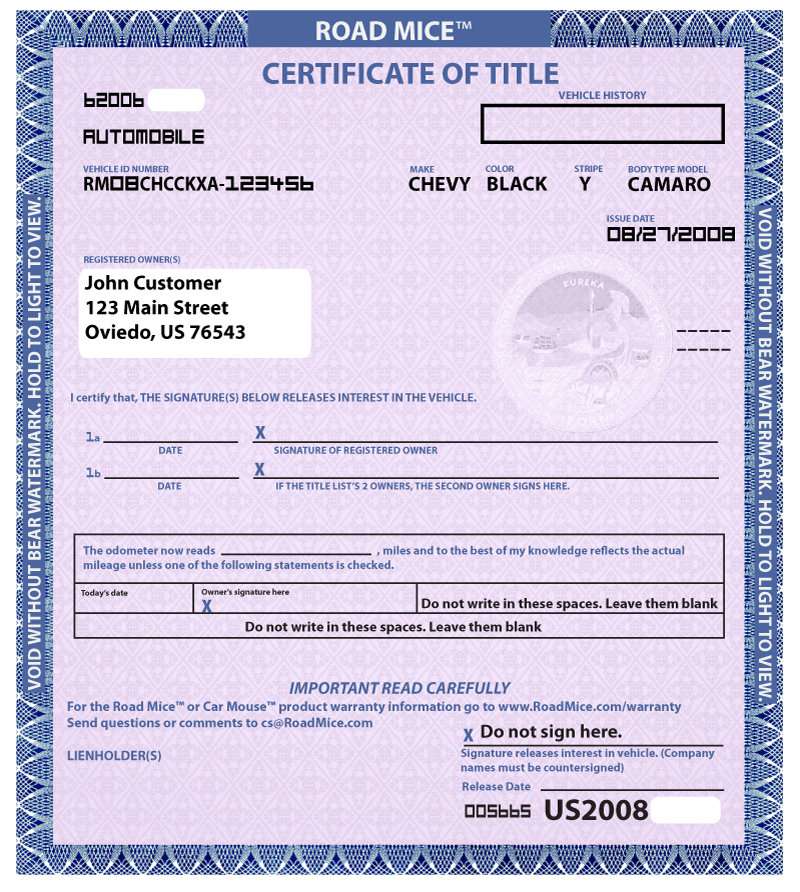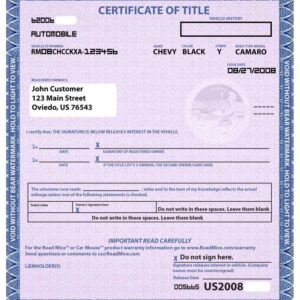Bill of sale for car without title
Secure Your Transaction with a Professional Bill of Sale for Car with No Title

A bill of sale for a car with no title is the single most important document you can have when navigating this unique and often complex vehicle transaction. Whether you’re the seller or the buyer, the absence of a title can feel like a major roadblock, filled with uncertainty and potential risk. But it doesn’t have to be. With a comprehensive, legally-sound bill of sale, you can create a clear record of the agreement, protect both parties from future disputes, and provide the essential proof of purchase needed for the new owner to navigate their state’s specific titling process. This document isn’t just a piece of paper; it’s your peace of mind, transforming a handshake deal into a secure, documented transaction.
Selling or buying a car is a significant event. There’s excitement, negotiation, and the anticipation of a new set of wheels. However, when the vehicle’s title—the legal document that proves ownership—is missing, that excitement can quickly turn into apprehension. Questions arise: Is this legal? How does the new owner get a title? What protects me if there’s a problem down the road? This guide, and the professional bill of sale document we provide, is designed to answer those questions thoroughly, empowering you to proceed with confidence and clarity.
Understanding the Challenge: Why is There No Title?
Before diving into the solution, it’s crucial to understand the common scenarios that lead to a car being sold without a title. Knowing the “why” can help you assess the situation more accurately.
- A Lost or Misplaced Title: This is the most common and usually simplest scenario. The owner genuinely cannot find the physical title document. In most states, this is easily remedied by the seller applying for a duplicate title from their local Department of Motor Vehicles (DMV) before the sale. However, this process takes time, and sometimes a seller is unwilling or unable to wait.
- A Vehicle Old Enough to be “Title-Exempt”: Many states have laws that make certificates of title unnecessary for vehicles past a certain age, often 10-15 years or older. These are typically classic cars, antiques, or project cars. In these cases, a bill of sale is the primary, and often only, legal document required to transfer ownership.
- An Inherited Vehicle: When a family member passes away, their vehicle may be passed on to an heir without a title being formally transferred through the probate process. The heir may possess the car and the keys but not the updated legal documentation.
- A Project or Parts Car: A vehicle that is not in running condition and is being sold strictly for parts or as a restoration project may not have a clean title. The seller might have owned it for years without ever bothering to transfer the title into their name.
- A Lienholder Issue: In some cases, a title might be held by a bank or lender until a loan is completely paid off. If the seller still owes money, they cannot legally transfer the title until the lien is satisfied and released.
- Abandoned Vehicles: Sometimes, a person might have a car left on their property and, after following local legal procedures for abandoned vehicles, obtain the right to sell it, often without a traditional title.
A Word of Caution: While selling a car without a title is common and often perfectly legal, it requires extra diligence. Be wary of sellers who are evasive about the reason for the missing title. It could be a red flag for a stolen vehicle, one with an outstanding lien (loan), or one with a “salvage” brand that hasn’t been disclosed. A robust bill of sale helps mitigate these risks but does not eliminate the need for due diligence.

Why a Generic Bill of Sale Isn’t Enough
You can find a simple bill of sale template with a quick online search. So, why invest in a professional, specialized document? The answer lies in the details and the specific legal challenges of a missing title.
A generic bill of sale might only include:
- Date of Sale
- Buyer and Seller Names
- Vehicle Make and Model
- Sale Price
A professional bill of sale for a car with no title is built for complexity. It includes critical, detailed clauses that protect both parties:
- Detailed Vehicle Identification: It goes beyond make and model to include the Vehicle Identification Number (VIN), engine size, body type, and color. This precise description is vital for DMV paperwork and proves the exact car involved in the transaction.
- “As-Is” Clause: This is absolutely essential. This clause clearly states that the buyer is accepting the vehicle in its present, known condition, with all faults, both visible and hidden. It protects the seller from future lawsuits or demands for repairs based on the car’s mechanical state. Without this clause, implied warranties can sometimes be argued, creating significant legal exposure for the seller.
- Odometer Disclosure Statement: Federal law requires that the seller discloses the vehicle’s mileage at the time of sale for most vehicles under 16,000 lbs. Our document includes a formal statement for this, which is a mandatory form for many state DMVs during the titling process. Failing to provide this can result in fines and complicate the buyer’s ability to title the car.
- Seller’s Assurance of Ownership and Right to Sell: This clause has the seller legally affirm, under penalty of perjury, that they are the true owner of the vehicle and have the legal right to sell it. This provides the buyer with a layer of security and a legal claim against the seller if ownership is contested.
- Acknowledgement of Missing Title: The document explicitly states that the vehicle is being sold without a certificate of title. It outlines the seller’s representation of why the title is missing (e.g., “Seller attests the title has been lost and is not available for transfer at this time”).
- Seller’s Commitment to Cooperate: This is a crucial protection for the buyer. It can include a clause where the seller agrees to provide any available supporting documentation (e.g., old registration, insurance cards, a copy of a lost title application) and to be reasonably available to assist the buyer with the titling process if necessary.
- Signatures and Notarization: Our document includes clear spaces for signatures, printed names, and dates from both buyer and seller. Furthermore, it is designed to be notarized. A notary public acts as an impartial witness to the signing, verifying the identities of the parties involved. This greatly strengthens the document’s legal standing and makes it much harder for either party to later claim the signature was forged.

A Step-by-Step Guide to Using Your Bill of Sale for a Car with No Title
Purchasing the right document is the first step. Using it correctly is what ensures a smooth transaction.
For the Seller:
- Gather All Available Paperwork: Before the sale, collect any documentation you have. This includes your driver’s license, previous registration, insurance cards, maintenance records, and any paperwork you have related to the missing title (e.g., a receipt for a duplicate title application). Transparency builds trust.
- Disclose Everything: Be brutally honest with the potential buyer about the car’s condition and the situation with the title. Explain why you don’t have it and what you know about the vehicle’s history. Documenting any known issues in the bill of sale protects you.
- Fill Out the Bill of Sale Completely: Fill in every field accurately. Do not leave anything blank. If a section doesn’t apply, write “N/A” for “Not Applicable” to show you didn’t simply forget it.
- Execute the Document Properly: Both you and the buyer must sign the document in front of a notary public. Do not sign it beforehand. The notary must witness the signatures.
- Provide a Copy: Once signed and notarized, give the original to the buyer and keep a signed copy for your records. This is your proof that you sold the car, released all interest in it, and received the agreed-upon payment.
For the Buyer:
- Do Your Due Diligence: Before money changes hands, do your homework. Use the VIN to check the vehicle’s history through a service like Carfax or AutoCheck. Look for red flags like salvage titles, odometer discrepancies, or theft records.
- Verify the Seller’s Identity: Check the seller’s photo ID to ensure the name matches what will be on the bill of sale. This helps prevent fraud.
- Understand Your State’s Laws: This is the most important step for you. Contact your local DMV or visit their website before the sale to understand the specific procedure and required forms for registering and titling a vehicle without a title. Some states have a specific “Surety Bond” process for lost titles, while others may require a court order or additional forms. Knowing the requirements beforehand prevents unpleasant surprises.
- Secure the Signed, Notarized Document: Ensure the bill of sale is filled out correctly, signed, and notarized before you hand over the payment. Do not accept a promise that it will be done later.
- Get a Receipt for Payment: While the bill of sale will state the sale price, it’s also wise to get a separate receipt for your payment, especially if paying in cash. Note the method of payment (e.g., “$3,500 cash received in full”) and have the seller sign it.
Beyond the Bill of Sale: Additional Documents That Help
While the bill of sale is the cornerstone, supplementing it with other documents can make the process even smoother.
- Previous Registration: This helps establish a history of ownership.
- Application for Duplicate Title: If the seller has already applied for a duplicate, a copy of that application is excellent supporting evidence.
- Release of Lien: If a loan was paid off, a signed release from the lienholder is critical.
- VIN Inspection: Some states require a law enforcement officer or DMV official to physically inspect the VIN on the car to verify it hasn’t been altered and matches the paperwork.
- Odometer Disclosure Statement: As mentioned, this is often a separate federal requirement and is included in our comprehensive bill of sale.

Peace of Mind is Priceless: The Value of Doing it Right
It might be tempting to scribble an agreement on the back of a napkin or use a flimsy, free template. But consider the stakes. For a small investment in a professional document, you are safeguarding yourself from:
- Legal Disputes: A clear “as-is” clause can prevent costly small claims court cases over mechanical issues.
- Ownership Challenges: If the seller’s ownership is questioned, your notarized bill of sale is your first and best line of defense.
- DMV Rejection: An incomplete or incorrect bill of sale can be rejected by the DMV, leaving the buyer unable to legally drive or register their new car.
- Financial Loss: In a worst-case scenario, a car without a proper paper trail could be impounded if discovered to be stolen, resulting in a total loss of your investment.
A professional bill of sale for a car with no title is more than a formality; it’s the foundation of a secure and successful transaction. It demonstrates professionalism, responsibility, and a commitment to a fair deal for everyone involved.
Ready to protect your transaction? Download our state-specific, legally-vetted bill of sale template today. It’s meticulously crafted to include all the necessary clauses for a no-title sale, giving you the confidence and legal security you need to move forward. Don’t leave your investment to chance—secure your deal with the right documentation.
Showing the single result



